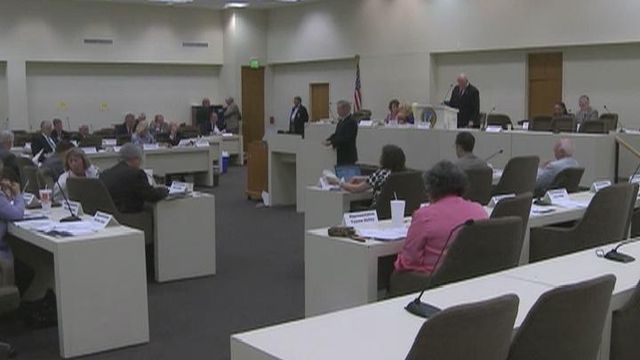Tolls or ads? Lawmakers seek ferry funding changes
House lawmakers are weighing a proposal to replace ferry toll increases with advertising, sponsorship, and concession revenue. How do House and Senate positions differ, and who will pay?
Posted — UpdatedAs amended in committee, the bill would leave current tolls in place on three of the state's seven ferry routes but would stop the Department of Transportation from raising them.
Two other routes that would be tolled for the first time would also be spared. Commuter ferries at Cherry Point-Minnesott Beach and Bayview-Aurora would remain free for one more year.
"What this bill attempts to do is put off tolling for a year and allow DOT and local governments to come up with ancillary funding schemes," said sponsor Rep. Charles Jeter, R-Mecklenburg.
Jeter said he and the bill's three co-sponsors – Reps. Paul Tine, D-Dare, Frank Iler, R-Brunswick, and John Torbett, R-Gaston – toured the coast to meet with local officials and businesses that would be affected by the toll increases.
"We felt like these were things that were avenues that could raise the funds necessary not to raise the additional tolls," Jeter said. "We strongly believe this is the right thing to do for the communities and a good thing to do for the state."
Tine told the committee the ferry system is more cost-effective than building expensive bridges over the routes, which he said would cost more than $1 billion.
"We operate all seven for about $36 million a year," he told the committee. "It’s a transportation system just like it is anywhere in the state."
But critics of the proposal said the new revenue streams should be considered in addition to the toll increases, not instead of them.
"We can’t afford to operate what we’ve got," said Rep. Edgar Starnes, R-Caldwell.
The background
In 2011, lawmakers searching for funding for the system required DOT to raise $5 million a year through tolling.
At the time, they took two routes off the table – Hatteras-Ocracoke and Currituck-Knotts Island – because there are no alternative land routes available for those runs.
In 2012, lawmakers opted to delay the toll increases by a year after a political battle with then-Gov. Bev Perdue left the legal status of the increases on uncertain ground.
The tolls
Cedar Island-Ocracoke and Swan Quarter-Ocracoke, the state’s two longest ferry routes, are now tolled at $15 each way per car. That would rise to $27 each way, plus $5 for each passenger in the car.
The Southport-Fort Fisher route is currently tolled at $5 per car. That rises to $10 per car plus $2 per passenger.
Bayview-Aurora, free now, would start charging $10 per car plus $2 per passenger.
Cherry Branch-Minnesott Beach, free now, would go to $4 per car plus $1 per passenger.
Hatteras-Ocracoke and Currituck-Knotts Island would remain free.
However, because the new rule brought in more than 10 protest letters from the public, the toll increases are now on hold pending legislative review.
Amanda Reeder with the DOA says, under the state's rule-making laws, the rule is stayed until at least June 2014 to give lawmakers a chance to vote to disapprove it. The only way to shorten the delay would be for the DOT to seek to have the rule put in place temporarily or to seek an executive order imposing the increases.
Senate budget
Senate leaders sought to find a way around the rules review process in their 2013 budget proposal.
Senate Bill 402 instructs DOT to begin collecting tolls in November on all seven routes, including Hatteras-Ocracoke and Currituck-Knotts Island. It also exempts the toll program from the rule-making process, ensuring it could not be delayed or changed by public input.
That provision has not been approved by the House.
Who pays?
It also includes some interesting statistics on where that money would come from.
On the two long routes to and from Ocracoke Island, out-of-state visitors made up 54 percent and 52 percent of traffic. But systemwide, only one out of four cars using state ferries were from out of state.
The state’s busiest commuter ferry route is Cherry Branch-Minnesott Beach. From November 2011 to October 2012, it had an annual ridership of 177,905 vehicles and 48,192 tourists.
The Cherry Branch services the Cherry Point Marine Corps Air Station.
The Bayview-Aurora route is also primarily commuter, with an annual ridership of 54,214 vehicles versus 13,774 tourists.
Commuter passes would be available for $175 (car plus driver) on the Cherry Branch route and for $250 (car plus driver) on the Bayview Route.
Related Topics
Copyright 2024 by Capitol Broadcasting Company. All rights reserved. This material may not be published, broadcast, rewritten or redistributed.





